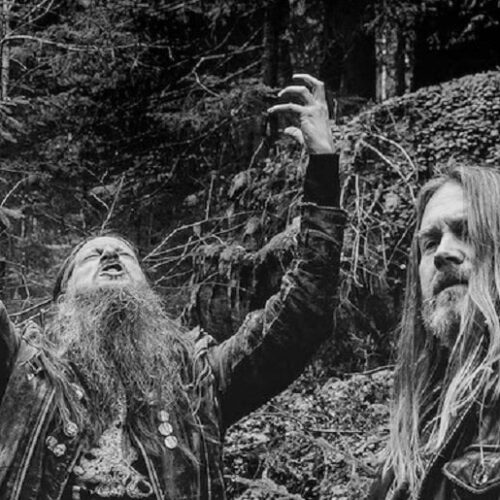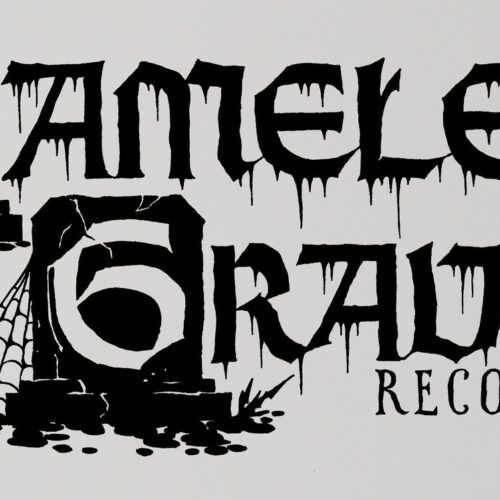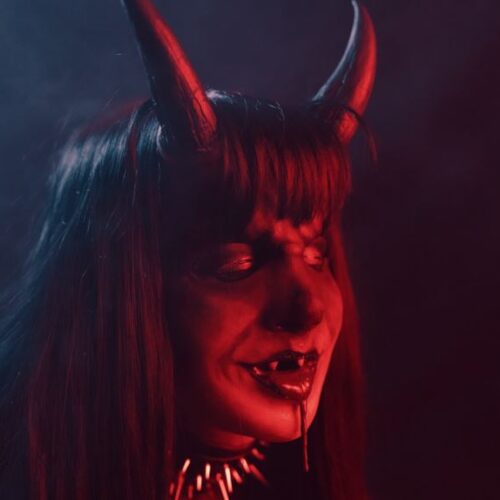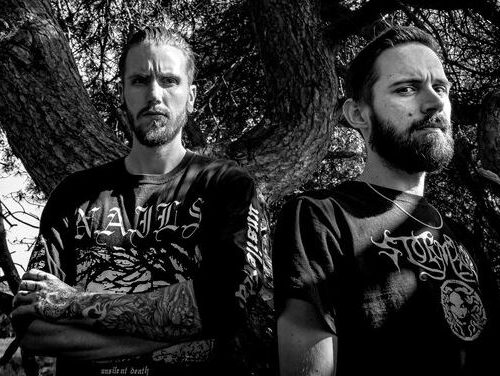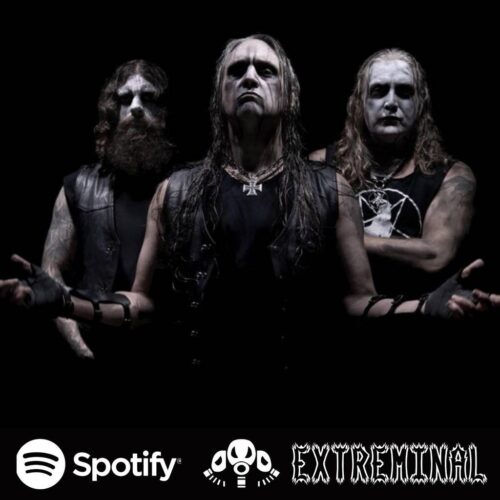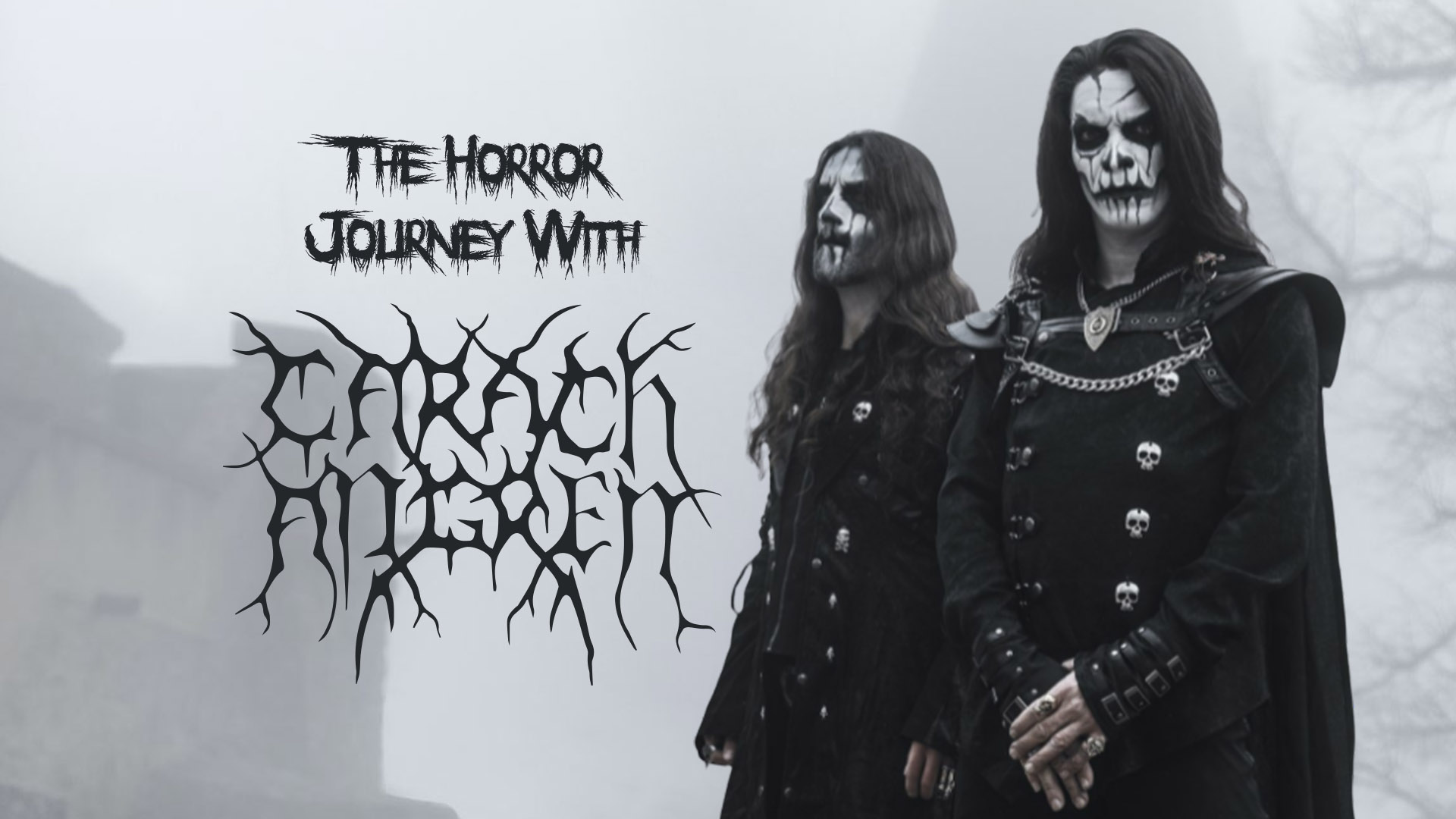
Carach Angren is a symphonic black metal band from the Netherlands, formed in 2003. The band members are; Dennis Droomer “Seregor” on vocals, Clemens Wijers “Ardek” on the orchestra, keyboard and back vocals. Ivo Wijers “Namtar” who was on drums and percussion, left the band in 2020. Seregor doesn’t play the guitar on stage currently but he continues with the vocals, for it’s easier for him to move around to perform his stage shows.
They are known for using orchestral melodies, death metal vocals, and guitar riffs. I don’t see Carach Angren as an ordinary black metal band, since it’s not easy to put them into a single genre or category. What matters is not whether or not they are better than other bands, since everyone has different tastes in music, but the fact that they are truly unique and creative in the type of art they make. I’m not a fan of any band, but being an artist in my own humble way, I appreciate true art and have a desire to share the artist’s work with the whole world. For this reason, the time and energy and hard work that Carach Angren put into what they do, surely deserves applause and respect. They have been called “Haunting Black Theatrical metal” or themselves tried to describe their style as “Melodic, Theatrical, Black/Death metal band”, when they had to name a specific category. I can hardly find words to describe them but to say the least, I can define them as “Epic, Horror Storytelling, Theatrical, Symphonic Black Metal Music Masters.”
They tell horror stories, using myths, legends, real incidents, and stories that they write themselves… etc. They don’t just entertain, but they convey important messages about domestic violence, child abuse, dangerous psychopaths that hurt people, paranormal activities and evil entities, the way selfish people play God, how humans are obsessed with death, the destruction of wars, including traumas on survivals, loss of lives, physical injuries. …etc
They use special sound effects that will take the audience to a magical realm, giving the sense of watching a musical horror movie. Of course, their creativity isn’t limited to all these. They use English, Dutch, German and French languages in their songs, according to what story they are telling in that particular song. Their choice of vocabulary is also unique. For instance, they like to use the word “Dood” which means “Death” in Dutch. They use specific names for the characters in their stories, just like the cast of a movie. Some of the names mentioned are; Dorothy, Monfred, Catharina, Charlie, Colonel Loftus, Captain Murryat and Hector. They give specific dates, years and locations as well, to explain where and when the events take place, so the audience can visualize the scene and feel like they are watching a movie.
Melodies and rhythm in songs change suddenly and unexpectedly that they mesmerise and almost hypnotize you. Just by listening to the melody of a particular song for just a second, you can easily tell if the song talks about a monster, a ghost or a vampire. The music matches the story perfectly. Also, Seragor adapts his voice skillfully to the stories being told in the songs. His voice expresses emotions in a harmony with sound effects. They have the symphonic sounds that give the sense of listening to Mozart, and Beethoven from the Baroque period, and they mix it with the brutal sounds of bands like old school Mayhem and Dark Funeral at the same time. They use a range of styles in their songs. For instance, the song “Three Times Thunder Strikes” has a little bit of a Swedish death metal sound, whereas the song “Pitch Black Box” sounds more industrial. I can hear a little Rammstein style in the song “Franckensteina Strataemontanus”. Ardek collaborated with Rammstein’s singer Till Lindemann. Also, Carach Angren worked with Zoran Bihać, the director of Rammstein to create “Franckensteina Strataemontanus”. The music video was inspired by Germany’s first horror movie, “The Cabinet of Doctor Caligari”. They used antique camera lenses, later combined with a digital camera to create a black and white movie effect.
All songs are connected to each other in a harmonious way. You find yourself in a magical loop where you want to go back to the beginning and listen to the whole story over and over again. You find yourself in some sort of a Haunted House where all types of horror themes are intertwined with each other, moving you magically from one scene to another.
Band members say in an interview that the idea behind all this is the question of how they can give something extra, how they can add another dimension to the story. And they achieve this by combining storylines altogether.
Carach Angren’s live stage shows are spectacular too. Despite Ardek’s and Seragor’s calm and down to earth attitudes during their interviews, they have fascinating energy on stage. Seragor moves in an energetic way, get into the character, expressing emotions like an actor. He says he never took acting classes, but he trained in Martial Arts, doing TaekWondo for 14 years, so the flexible moves must have come from that. Their stage settings and theatrics are creative and captivating.
In an interview with Nummirock in 2017, Carach talks about their music style and how they create stories. They say “We started out as a black metal influenced band, but we have developed throughout the years. We have incorporated elements like industrial and thrash metal. We are more than symphonic metal, what we are making is horror metal. We respect bands like Mayhem and Dark Funeral. We were inspired by them, bands like Cannibal Corpse. We wanted something more. Genres are limiting. We don’t want to be labelled in a specific genre. We just want to be Carach Angren.” This shows that they are creative, visionary, and innovative, yet they are so humble and respectful to others.
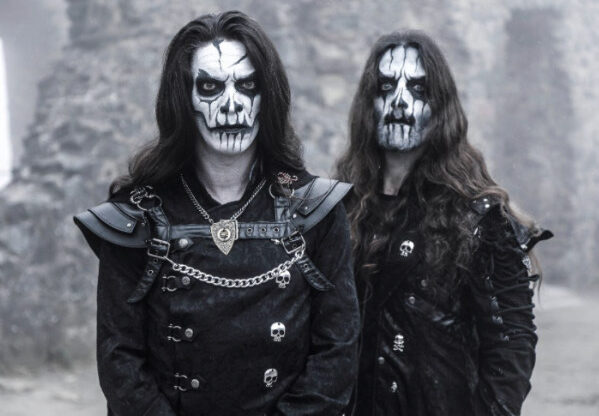
THE NAME “IRON JAWS”
The name Carach Angren means “Iron Jaws”. It is also called the Isenmouthe or Iron mouth, which is a fence with pointed iron posts that look like teeth in jaws. It was a pass in Mordor that leads into the Gorgoroth in the movie “Lord of The Rings.”
The name Iron Jaw was also used in a comic book. Iron Jaw was a character in Boy Comics and first appeared in 1942. A German soldier named Von Schmidt was badly disfigured during World War I. Doctors had to replace his jaw with a metal one.
Carach Angren’s choice of their name as a band is very interesting. The meaning of this name could be a magical gateway that will take the audience to another realm, to the other side, through an exciting journey, while it looks terrifying and creepy to pass through at the same time. The Iron Jaw character is also quite interesting, because it may easily represent the “Monster” which Carach Angren depicts in their songs all the time. The themes of a German soldier, World War I, a man having a disfigured face that would potentially make people see him as a “freak” can actually be found in Carach Angren’s songs, which I will be talking about in detail soon.
WHAT KIND OF MONSTER?
Carach Angren mainly centres their songs around a “Monster” idea, which would sometimes be in a human form or a ghostly, evil entity form. An interview with Metal Tris, state that there are two kinds of monsters: the first kind is the one that was born or created ugly and disfigured and he is considered to be a “freak” in the eyes of society. Seragor says “The monster is seen as an ugly freak but he is a very good person and is very sad. You have to give him a chance to live in a society”.
I’d like to put the “monster” idea under the microscope, as I will be diving into a rabbit hole, during this thrilling journey.
Let’s begin with the song “Franckensteina Strataemontanus” which is also the name of Carach Angren’s latest album. The Frankenstein character in this song is a perfect example of the type of monster that is considered a “Freak”. The song references the movie “Frankenstein: The True Story”. It is a 1973 British movie, based on the novel Frankenstein, written in 1818 by Mary Sheller. The movie is about a doctor named Victor Frankenstein, who loses his younger brother. Victor denies God and declares a partnership with the devil, by bringing back his brother to life. And that’s what Carach Angren tells in their song “Franckensteina Strataemontanus”: a human that plays God, by experimenting and creating another living being. The idea and the actual science behind this sounds scary, when we talk about resuscitated dead bodies, cryogenics, re-animated corpses and maybe viruses to turn humans into zombies, with the help of today’s advanced technology. But in the movie “Frankenstein: The True Story”, the creature has feelings and emotions, and he falls in love with a female. In the same album the songs like “Monster”, “Sewn for Solitude” and ”Der Vampir Von Nürnberg” follow the same monster and immortality idea.
The song “Sewn for Solitude” points out the feelings of the freak monster: Abandoned rejected. Spat out, abused, neglected. He is angry and wants revenge and justice.
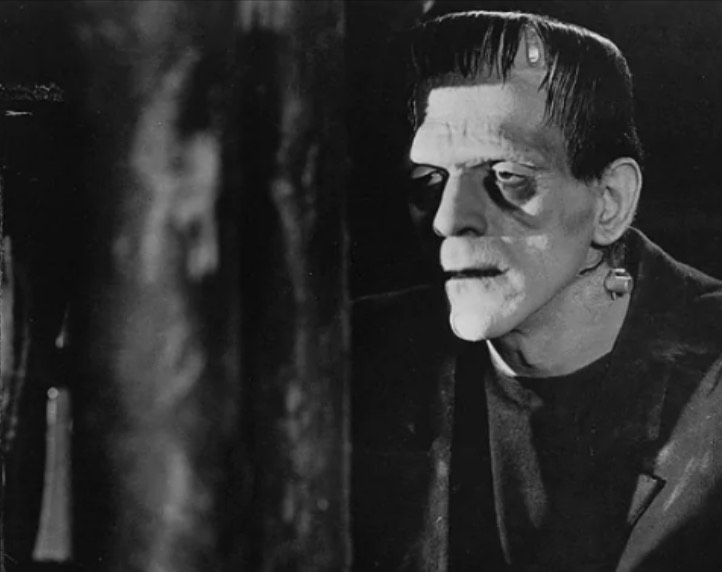
THE ELEPHANT MAN
The monster that has feelings reminds me of the Elephant Man, who was born with a disfigured face that looked like an elephant. This is a real person whose name was Joseph Merrick, born in England in 1862. They called him Elephant Man because he was born with a congenital disorder. He worked as a freak, to entertain people and died in London Hospital in 1890. A movie was produced called “The Elephant Man” in 1980. John Merrick works as the “Elephant Man” in a sideshow. Dr Frederic Treves sees Merrick and decides to take him home, and soon he discovers that behind John’s monstrous look, there is a gentle, and beautiful soul. John Merrick teaches the snooty British upper class a lesson about dignity. Merrick was shunned out of society because of his ugly appearance. People treated him as if he was a freak. He was very sensitive, honest and a romantic gentleman. He was so lonely and in pain. In the movie, the character conveys an important message for the whole world. He shouts and says “I’m not a monster, I’m a human being!”
A SATANIST VAMPIRE
Another type of monster that Carach Angren talks about in their songs, is the one that’s an evil person who takes pleasure in hurting people. This monster is not the one that hides under your bed, but it is the one that walks among us freely. These are abusive people, criminals and murderers in our society. They are ruthless and have no compassion or empathy for anyone.
In the song “Der Vampir Von Nürnberg”, the vampire character is a freak, a monster and wants to be immortal. But most importantly, the story is about a real killer, who lived in West Germany during the early 1970s. He was a satanist, named Kuno Hofmann. He actually went to the morgue and drank the blood of the shot wounds of the victims, so he could become immortal. He killed two people, and he lives using a different name after getting out of jail in 2004. He also started writing his gruesome memories of his murders in 2008… This Monster is a sick-minded, evil person. Even though Frankenstein was not a normal living person, the idea of immortality connects to the vampire of Nurnberg’s desires.
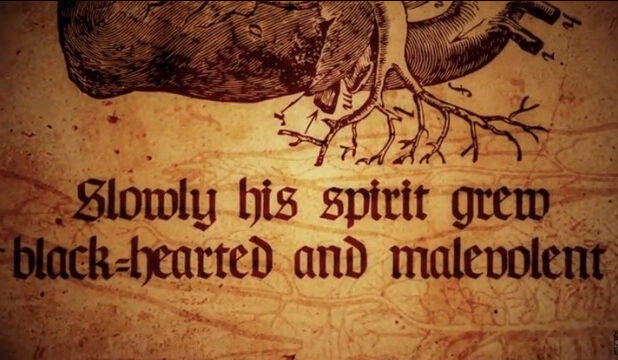
HANSEL AND GRETEL
Welcome to the horror of bitter reality, because this is no fairy tale…
Carach Angren depicts the “evil person” type of “monster” idea, once again in their other album “This Is No Fairytale”, inspired by the traditional
Hansel and Gretel story, their entire album centres around this fairy tale. The real story of Hansel and Gretel dates back to the Great Famine, between 1314 and 1322. There was mass starvation that killed a lot of people. Mothers abandoned their children, hoping the rich would find them and feed them, and in some situations, parents ate their own children. This is a horrifying history, which involves child abandonment, cannibalism, enslavement, and murder. Then, the fairytale of Hansel and Gretel was created. Hansel and Gretel are brothers and sisters. They don’t live in a happy home. One day, they get lost in the forest, and they find a gingerbread house that belongs to an evil witch. The witch plans to eat Hansel that she imprisons. So, she enslaves Gretel and forces her to overfeed Hansel. Then, Gretel shoves the witch into an oven, and the siblings manage to escape.
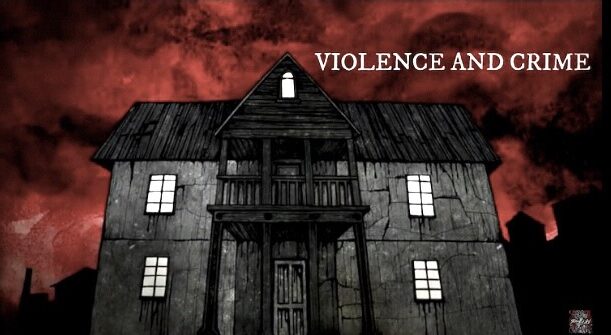
After finding out their mother committed suicide, brother and sister decide to run away from home, to find a safer place to survive. But sadly, so many other dangers wait for them outside. They walk all night, and when it’s the morning time, they sit on a bench, hungry and exhausted. Then a man in a clown suit approaches them. He is the “monster” that drugs the poor kids with candies and kidnaps them. The story becomes a modern-day interpretation of the Hansel and Gretel story. It clearly represents evil and monster people out there, lurking around to hurt innocent people.
The story continues with the song “Possessed by a Craft of Witchery”… The evil clown with a sinister grin turns out to be a psychopath that sacrifices children in his house, performing satanic rituals. He kidnaps kids, tortures them and kills them brutally…
Then the song “Killed and Served by the Devil” explains that the psycho killer forces the little girl to watch the torture and murder of her brother, makes her clean the blood, help him bury the body. And finally, he eats the boy’s heart and makes the girl eat her brother’s meat as dinner.
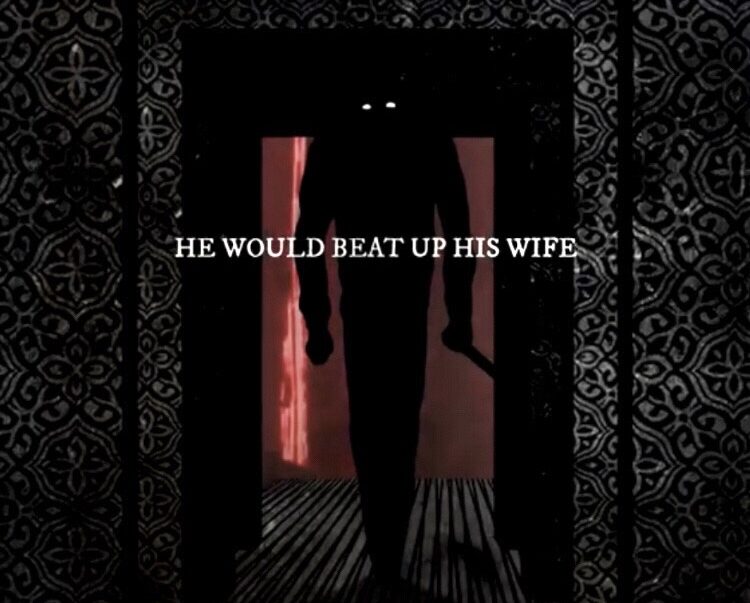
Carach Angren begins the story with their song “There’s No Place Like Home”. It’s about domestic violence, which is a serious issue in our society. Two siblings, brother and sister have abusive parents. Father is an alcoholic, pervert and physically abusive. Mother is a drug addict and alcoholic as well. The man beats up his wife and rapes his own daughter.
Then the story continues with another song: Two “Flies Flew into a Black Sugar Cobweb”.
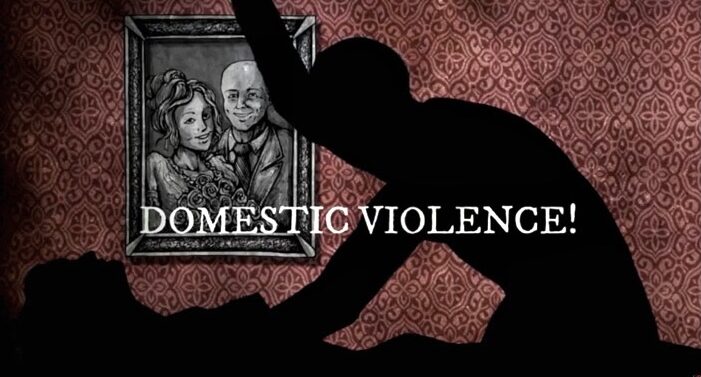
After that, just as she is on the verge of committing suicide, the girl feels brave and comes up with a plan to escape in the song “The Witch Perished in Flames”.
Then again, It connects to the song “Monster”. This monster is not the kind that hides under your bed, but it is the kind that would torture, rape and kill. We need to be aware of those monsters and protect our children.
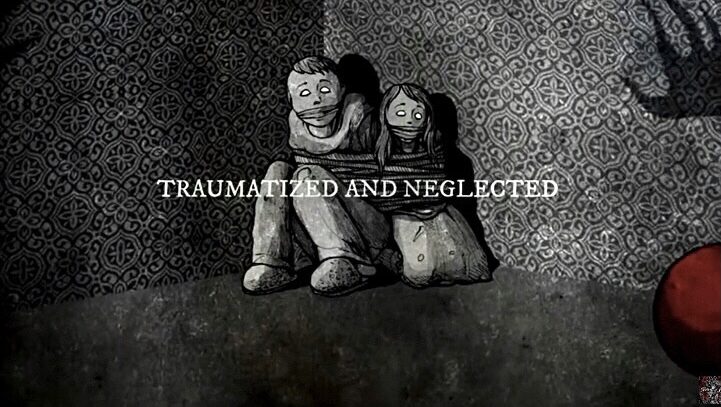
“LITTLE SUSIE” BY MICHAEL JACKSON
The “evil, human monster” concept reminds me of Michael Jackson’s song “Little Susie” In 1972, a little girl named Susie was murdered. Michael Jackson composed a song for her and published it in 1995. He always hated child abusers and paedophiles. Michael’s music style was not the same as Carach Angren. But he was a creative artist, who told stories in his songs, in a similar way Carach Angren does.
The real and tragic story of little Susie goes like this: Susie’s mother was a drug dealer and her father was in a mental institution. Her older sister Anna was the only one who took care of her, was hit by a truck and died. Susie had nobody to take care of her. Her mother died of an overdose of drugs and Susie was sent to the mountains to live with her grandfather. The grandfather raped and abused her for two years. One day, he got drunk and left the house leaving Susie alone at home. Someone broke into the house, stole their money and killed Susie. The police found Susie’s dead body lying on the staircase.
They say to this day, if you call Susie’s name, and listen hard enough, you can still hear her sad and innocent cries calling out for help that never came. This ghost story also reminds me of Carach Angren’s song “The Ghost Of Raynham” which is about an abused woman that comes back as a ghost in the house in which she was imprisoned.
A GHOST STORY
Carach Angren’s first album was called Lammendam. It was a concept album that focused on a Dutch legend of The Ghost Lady in White, named Lammendam who is a woman in a white dress. She lives in a castle, seduces a man, makes him fall in love with her, and then she cheats on him with another man. She lies and betrays those men at the same time. Then somebody sets her castle on fire, to make her pay for what she did. Lammendam can’t escape, she dies screaming in flames. Then Lammendam’s ghost haunts and kills the men in the woods. She is the “monster” in this story, both as a bad person and an evil spirit. Carach Angren uses special sound effects that make you visualize the burning of the house, how she panics, tries to escape, and screams in pain.
The last song in the album talks briefly about another White Ghost Lady story of a ghost woman, called La Dame Blanche, meaning The Lady In White in French. They mention the bride but don’t elaborate on the story. So, the story starts at Montmorency Falls in Québec, Canada in 1759. The French and the English had a seven years war. Mathilde and Louis were in love and getting ready for marriage. They would always take walks along Montmorency Falls and had planned to have their wedding there. Mathilde sewed herself a beautiful, white wedding dress. Sadly, their wedding day became a day of tragedy. The English attacked. Women and children hid in the forest while men helped the French soldiers. The war was over and the French had a victory. Men returned home, but Mathilde couldn’t find Luis. They told her that Luis had died at the foot of Montmorency Falls. Mathilde cried in pain, put on her white wedding dress, ran to the falls where Luis died, jumped from the top and killed herself. Mathilde’s ghost was seen walking around the falls. It is believed that whoever tries to disturb her, die in a horrible way. White ladies in dresses represent innocence, pain and death, and some of them are associated with evil, depending on the story behind it.
This story connects with the songs “The Funerary Dirge of a Violinist” and “Bitte Tötet Mich” (please kill me), which are about tragedy, pain and trauma of wars. In this story, was La Dame Blanche the monster, or the victim of the real monsters behind scenes, who create wars to destroy innocent people’s lives?
Not every ghost has to be evil. The bride La Dame Blanche was an innocent young woman, just like The Ghost of Raynham. Carach Angren’s demo album “Ethereal Veiled Existence” (2005) has a song called “The Ghost of Raynham”, who was a tortured soul, trapped in her house forever, as a ghost… It’s about a woman named Dorothy Townshend, who was imprisoned by her husband, left to die in her room, and now her restless soul wanders in the house. She is called “The Brown Lady” because she wears a brown dress.
It’s a real story in history that took place in Raynham Hall in Norfolk in the 1700s. Dorothy fell in love with Lord Charles Townshend. her father didn’t give his permission for the marriage. Charles shortly afterwards married Elizabeth Pelham. Elizabeth died in 1711. They had five children. He got back together with Dorothy and they married in 1713. But he did not know that Dorothy had an affair with the notorious Lord Wharton during the time they had been apart. He got angry, locked Dorothy in her room, and didn’t let her see her children ever. Dorothy remained a prisoner all her life until she died in 1726. According to another story, she was pushed down the stairs, broke her neck and died. It is said that her spirit never left Raynham, and she wanders the house looking for her children. The husband was jealous, abusive and a killer. Who is the “monster” in this story? The ghost of the Brown Lady, or the jealous, violent, killer husband?
There have been sightings of the Brown Lady’s ghost and people were able to capture her ghostly image with their cameras. Although the music style is different, this tragic story is very similar to the “ghost” figure in Michael Jackson’s songs “Ghosts”, “Is It Scary” and “Too Bad”, which are also about the spirits of tortured people once they were alive. They are trapped in a house and play tricks on visitors.
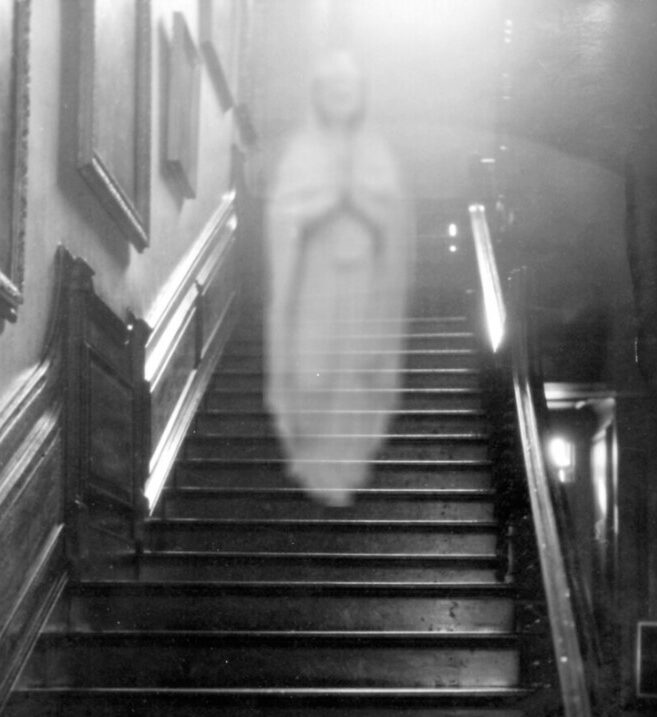
GHOST OF THE SEAS
Carach Angren’s second album: “Death Came Through A Phantom Ship” (2010) is also a Dutch legend. The Flying Dutchman is a cursed vessel that is doomed to sail the oceans. It is a ghost ship that people began to see in the Cape of Good Hope, during stormy weather in the 1600s.
The music puts you in a hypnotic trance, with special sound effects that make you feel like you are watching a musical movie.
Van Der Decken is a pirate, who has no compassion for anyone. Pirates are savage criminals who steal vessels, people and goods. They are the symbol of terror and violence on the seas. So, Van Der Decken is the type of “monster” that’s an evil person that hurts people.
The intro of the album is like a scene from a horror movie. The creepy radio announcement in the Dutch language translates as: “You will drown in your own blood!” Then they begin to tell the story of the ghost ship.
The song that impressed me the most in the album is “And The Consequence Macabre”. As the story continues with this song, the character comes home and tells his wife about what he experienced in the sea. They go to sleep and he has a vivid nightmare. He sees an evil ghost man, punching him. He grabs the man with both hands and pushes him to the side where his wife sleeps. Then he grabs a knife from the kitchen, and stabs the guy so many times, leaving his face disfigured. After that, he goes up to his daughter’s room and sees a wild dog. He goes up to the attic and grabs his shotgun. He shoots the dog and finishes it off with the knife. He turns around and sees that the evil man is laughing. Then he wakes up from this horrible dream. But when he turns around, he finds his wife stabbed in the face and killed. He goes to his daughter’s room, and finds her dead body with blood everywhere… He realizes that he is the one that killed them. Then he kills himself with the shotgun, blowing his own head…
This character was clearly possessed by a demonic entity, which made him commit a terrifying crime unconsciously. And when he came back to his senses, he realized what he did, lost his mind in pain and committed suicide. Who is the monster in this story? Is that the guy who killed his own family, or the demon ghost that controlled his soul and body to make him do what it wanted?
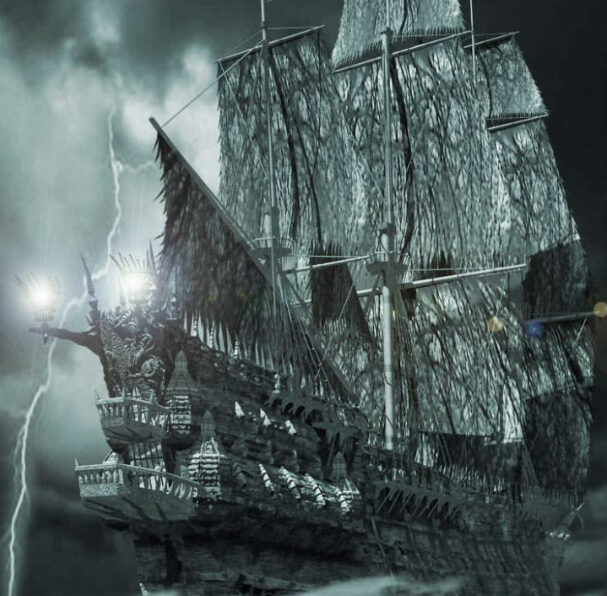
TERROR OF WAR
The third album “Where The Corpses Sink Forever ” (2012) is not based on legends. They wrote all the stories themselves and did an excellent job. The album depicts the terror of war and its destructive consequences on individuals and society.
In the song “Bitte Tötet Mich”, a soldier feels very disgusted by the ugly face of war, depressed and hopeless that he thinks the only way out in order to become a free man is to commit suicide. Interestingly, he can never achieve to take his own life for there seems to be someone that saves him or an unexpected distraction occurs, preventing his suicide, every time he attempts to do it. First, he tries to shoot himself in the head.
Then he hangs himself but fails again. He throws himself into the line of fire, during a firefight. He sticks a luger, a type of German automatic pistol into his mouth. He gets shot twice in the spine from behind and blows half his face. He still cannot die but this leaves him completely paralyzed. He lives for another two years before he finally dies.
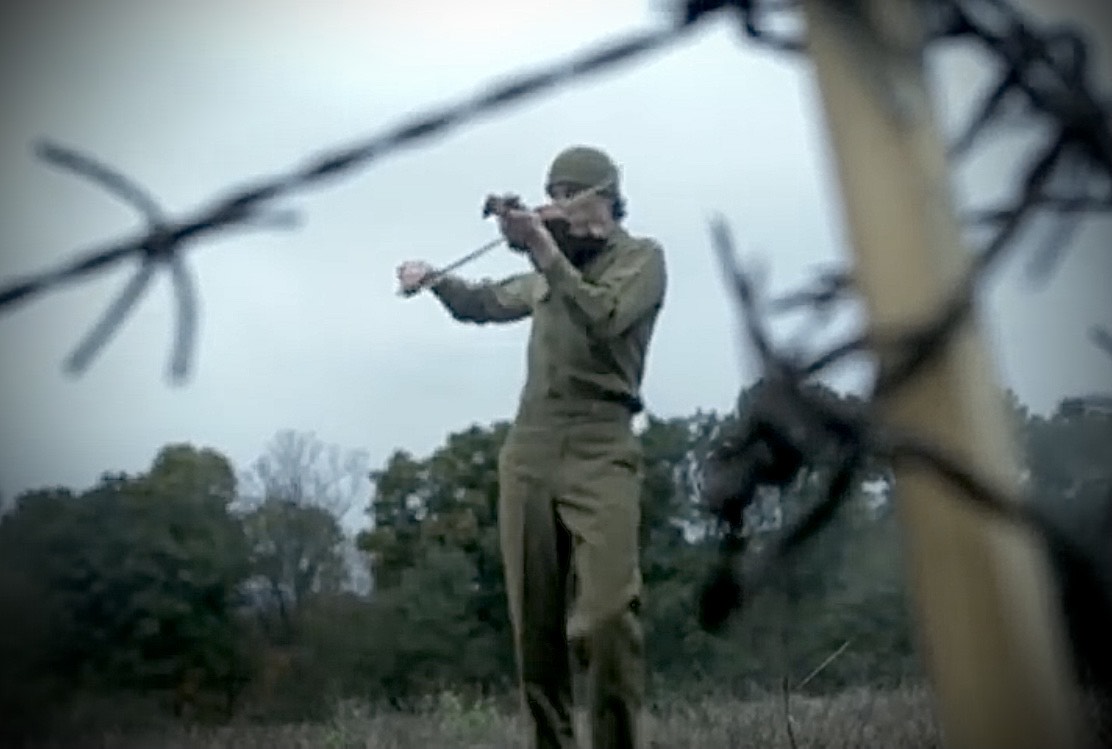
CRYING OUT OF A VIOLINIST
The song “The Funerary Dirge Of A Violinist” has one of the most impressive and touching war stories. The song is about an emotional soldier, who plays the violin. He has anti-war ideas, but he finds himself in the middle of a battlefield during World War II 1941. He resists and keeps playing his violin to protest the war. But they shoot him while he plays his violin.
The music video is almost like a short film about a soldier. We see a young man and a girl, walking around on the fields, then they find an old diary which belongs to the violinist soldier who died during the war. Then they feel the resends of his and other soldiers’ shouts around them, and they begin to run away. The girl stumbles upon something on the ground, digs the object out with her hands and finds an old violin, which belonged to the soldier… then the ghost of the violinist soldier approaches them…
These words in the song lyrics are very impressive: “Symphonies of grievance and fear… Melancholy and despair… Some hear a violin sound, others hear a man moaning in tears. There’s one soldier incapable of committing sin. Kept alive by his comrades’ thanks to his heavenly gift with a violin.”
The soldier has an artistic, emotional and delicate soul. He doesn’t want to be on the battlefield or people to be killed, for he knows it’s the evil rulers that set up these wars to destroy people. He wants to play his music with his violin and live in peace on earth with others. But he is in a difficult situation because he was put on the spot, and left with no choice.
In the song, the soldier says:
“I’ve had enough of this sickening war and its murderous puppets! They don’t understand that the language of music cannot be spoken in death. I never took a life! Maybe now is the time to take mine. In the name of music; shall I cut my wrists or hang myself high by a violin string? A symphonic suicide is what I shall bring!”
So he makes a decision, and walks straight into the firefight, playing his violin. The song describes the soldier’s song he plays as a “dreamlike masterpiece”. He stands right in the middle and both sides open fire directly at him. They kill the violinist soldier…
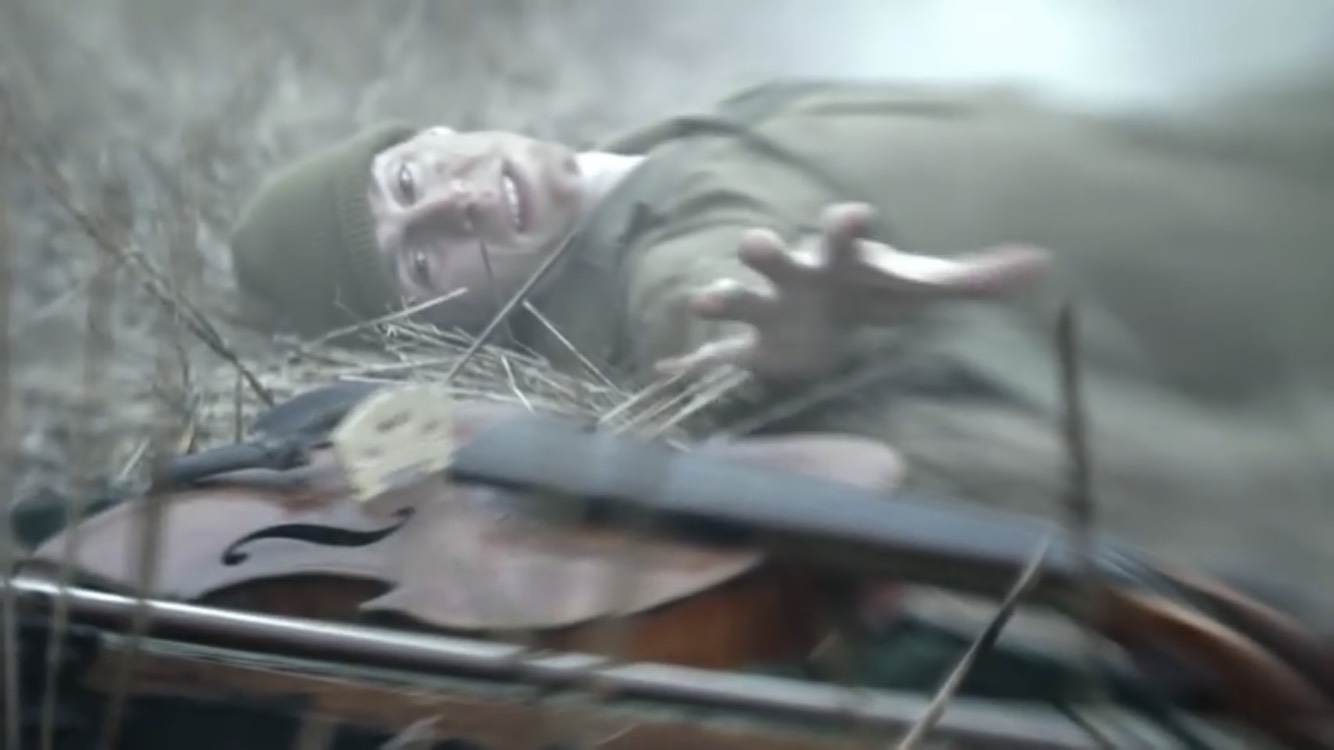
WAR TRAUMAS AND THE LITTLE HECTOR
The song “Sir John” talks about severe war traumas, painful memories during wars, in grotesque language. The song “General Nightmare” describes the cold day ruthless generals in wars, who show no compassion and mercy for civilians. He attacks innocent people viciously and destroys their lives. The general character is the “Monster” in this song.
“Little Hector What Have You Done?” Is another song with a haunting story. A nine-year-old boy named Hector draws a picture of a dead man and his child. His teacher asks why he did that. He replies: “It’s me and daddy in the attic; hanging when we are dead.” Hector comes home, finds his father’s gun. Hector is possessed by a demon entity. He shoots his father in the head, while the man is asleep. Then he shoots himself in the head as well. His mother finds their bodies when she comes home. She takes an overdose after the funeral and dies.
The story behind this is; Nazis came to a house during the war and they took the man and his son upstairs.
The song lyrics explain the rest as:
“With his hands tied to his back and another rope around his neck, they made him stand upon the shoulders of his own dear son. Unfortunately, the child could not hold his daddy that long. For several days he sat amongst his ravished and executed family. Eventually, he knotted a rope out of his own bed-sheets and hung himself next to daddy.”
So, the same exact thing happens to the other boy who killed his own father and then took his own life. The house was haunted and cursed. Hector lost control and committed this crime. This is connected to Carach Angren’s second album song “And The Consequence Of Macabre” which has a parallel story, where the man is possessed and kills his family members, and then he shoots himself.
BURY THE DEAD
The war concept of this album reminds me of an anti-war American play. “Bury The Dead” is an expressionist and anti-war drama by the American playwright Irwin Shaw. The surreal play is about the refusal of six dead soldiers during the world wars. When a priest is about to say prayers for the dead, groans are heard from the graves. Then the six dead soldiers rise from the grave, saying that they don’t want to be buried and they wish to live among other people. The message of this play is timeless. They bring the sisters’ wives and mothers of the soldiers, hoping that women would convince them to go back to their graves. I personally saw this play years ago and was very impressed with the story and its message to the whole world. I always remember this touching line from the play:
“I was only twenty, Mom. I spent twenty years practising to be a man, and then they killed me.”
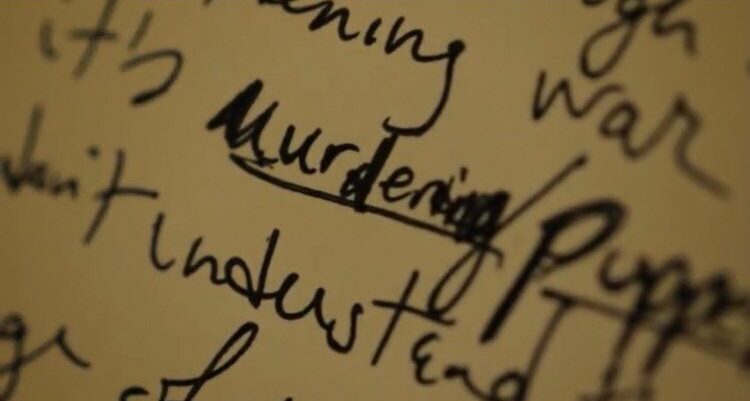
THE GHOST AND THE DEVIL
The album “Dance And Laugh Amongst The Rotten” (2017) go back to telling ghost and haunting stories.
The song “Charlie” is about an evil entity that was summoned by a girl and her group of friends, using an Ouija board. The evil entity begins to threaten the people who performed the spirit calling session, so they get scared and panic that they forget to perform a portal-closing spell. They manage to run away for the moment, but in the song “Three Times Thunder Strikes”, Charlie comes back to haunt and kill them. It turns out that the girl had opened up a black box some time ago, which was cursed and not meant to be opened. She unleashed the demon unintentionally.
The song “Pitch Black Box” describes the box as a black cursed casket carved from wood. So, we discover that Charlie came from a cursed casket, before the ouija calling.
“OBSESSION BREEDS POSSESSION” and the short film of another death story begins;
In the song “Charles Francis Coghlan” there is a girl who is obsessed with a famous actor named Charles Francis Coghlan, who died years ago and his body is lost in the sea. In the music video, the girl loves and admires Charles so much that she has pictures of him on the wall. She often dreams about the dead actor. She finds a box in her room. The box says “Magic Dancer” on it. She opens the box and finds a black key. Then she hears strange voices and sees smoke coming from under her bed. As soon as she reaches underneath the bed, a paranormal activity happens and she gets struck by an evil entity, like a strong electric shock. She sees a black box under the bed, opens it using the key. All of a sudden she finds herself being dragged down into the other world. The place looks like a graveyard. She sees the gravestone of Charles. Just as she thinks she will finally meet him, she finds herself drowning to the bottom of the sea, and she never comes back…
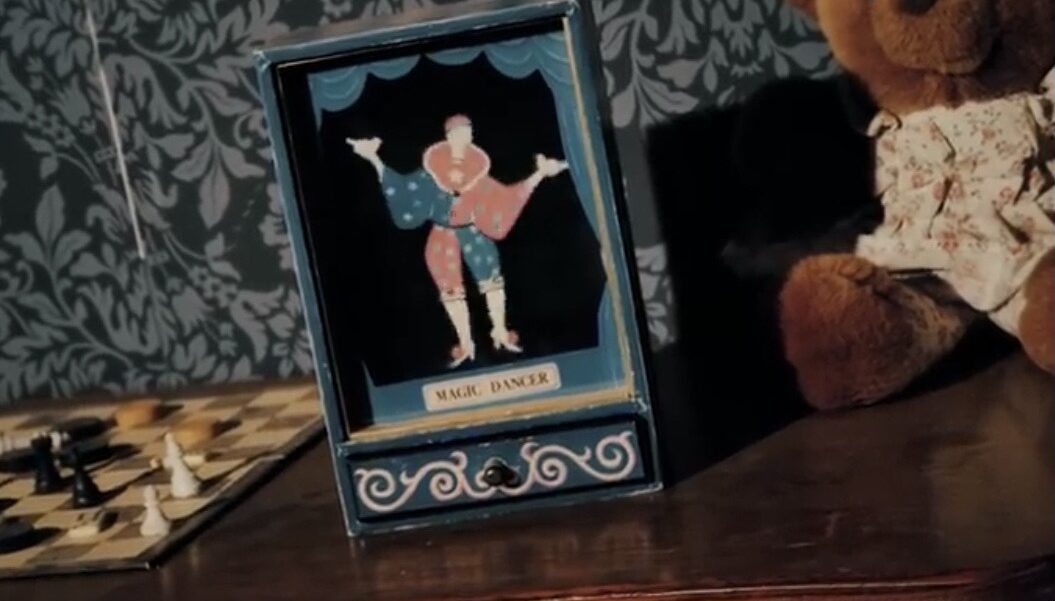
The sound and visual effects are truly captivating. The dolls and toys in the girl’s room and the sound effect of a playing music box give the feeling of an innocent girl’s dream world. The graveyard and the sinking ik the water scenes are ghostly and creepy.
This song is connected to the other song called Pitch Black Box since they both have the same black box concept.
Charles Francis Coghlan was a famous actor in the late 1800s. When he just started his own play called “The Royal Box” in Texas, he got ill and died. His body was laid in a metal casket in Texas, to be shipped for burial in Prince Edward Island. Ten months after Coghlan’s death, his casket disappeared. A strong hurricane hit the town of Galveston in Texas in 1900. The hurricane destroyed buildings, displaced and carried to the sea several coffins from the graveyards, and one of them belonged to Charles Francis Coghlan. His sister stated in 1922 that the floating coffin was still missing.
The song “Song For The Dead ” is about the obsession with the dead. Also, the name King Libertine is mentioned in the song. “King of Libertine” is a novel by Pam Godwin. It’s a dark, historical pirate romance between a female captain of a private ship and a priest.
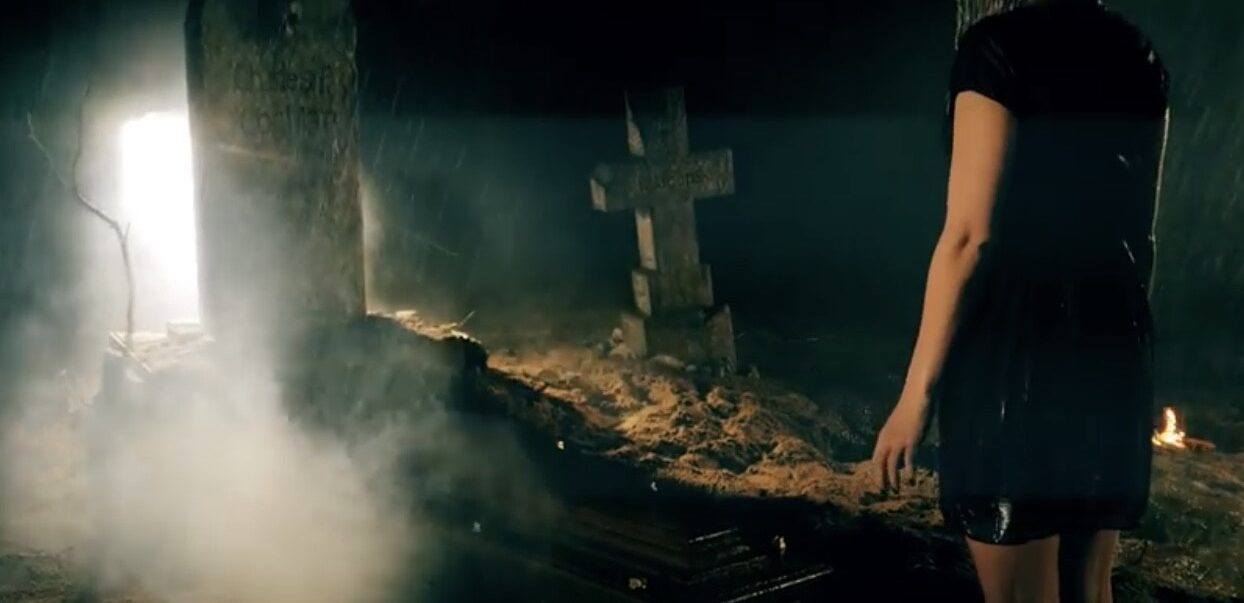
THE DEVIL TRICKS
The song “In De Naam Van De Duivel” is about a demon that sends an evil witch to separate a husband and wife. The witch tells the woman that she needs to cut off a piece of her husband’s hair while he is asleep at night and bring it to her, to prevent the man from leaving the wife.
Then the witch tells the husband that his wife will stab him with a knife at night. The man waits, and when the wife approaches with the knife, he grabs it and slits the woman’s throat and kills her without any hesitation or questioning. The devil is smart and tricky. Who is the monster in this story? The demon? The evil witch? Or the gullible husband and wife, who can’t even think for themselves?
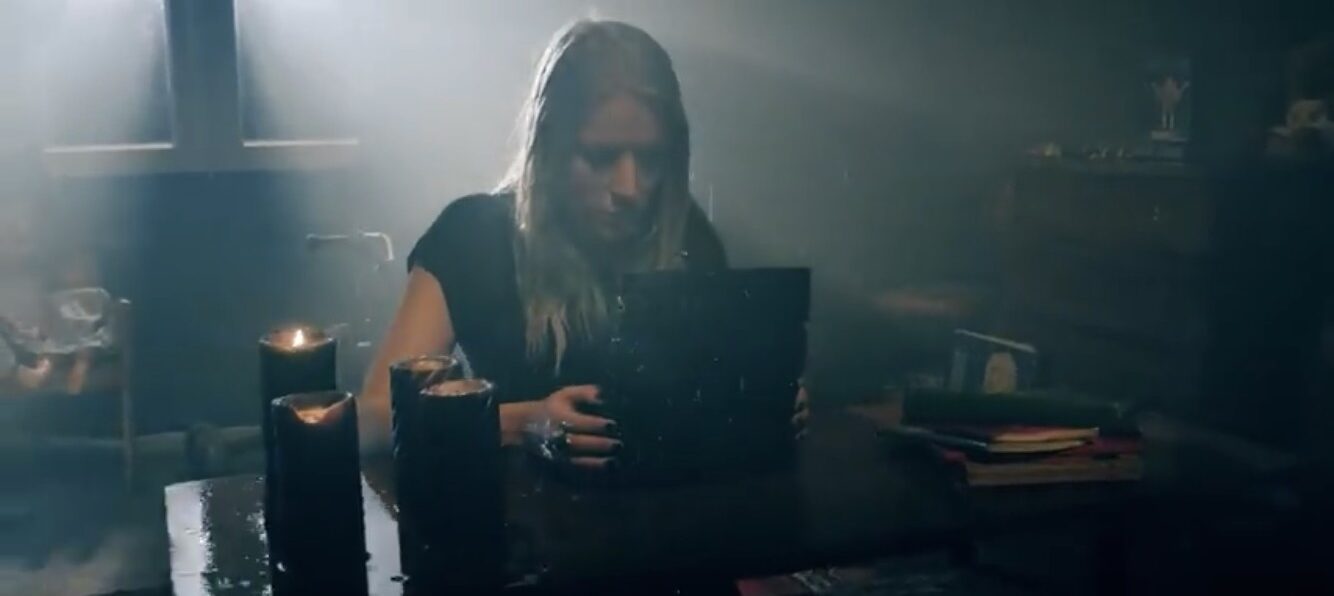
PER OHLIN AND CARACH ANGREN WITH THE DEATH CONCEPT
Ardek says he always liked Jurassic park dinosaurs, which is connected to the ideas of experimenting and monster creating as well. Seragor says he was different from other students at schools. Because in drawing art classes, he would always draw about death, and horror, that his teachers thought something was wrong with him. This reminds me of Per Ohlin “Dead”, the deceased singer and lyricist of Mayhem. Per was a true artist. I observe a similar type of artistic creativity between Per Ohlin and Carach Angren. Per also loved to express himself using horror concepts in his artworks. His drawings, album covers, stage shows, his outfits and corpse makeup had horror and death themes that had the same innovative concept as Carach Angren has. The music video for their song “There Is No Place Like Home” has horror cartoon drawings that are very similar to Per Ohlin’s horror-themed drawings, especially the dead trees.
In an interview with Noizer.com, Seragor says
“I surround myself with death because I can see the beauty in it… I wanted to show the people in my world that I make art of death.” He sounds similar to Per Ohlin in the same way of approaching “the art of death” concept.
Per Ohlin’s brother Anders says “Had he not been a musician, I would have hoped that he would have been an illustrator or an artist. I think his idea was to create music that would reflect how he experienced a horror movie. One of his bigger passions was to watch horror movies and to read old ‘shock series’ from the 70′s. So I would imagine that he wanted to capture the same feeling you get watching horror movies and transfer it to the music. An interesting parallel is that many horror movies are budget quality, but you still get that creepy feeling watching them. That probably attracted him, that it should be possible to create the same feeling in music as well, on a budget, so to say.”
Interestingly, Per wanted to tell horror stories just like Carach Angren is doing now. He once designed a stage with a coffin, with smoke coming out of it. He also played in a music video as a zombie. In a letter to his pen pal Old Nick that Per wrote in March 1990, he says: “I’ve never been in any art school and in fact, I don’t know how to draw at all. I’d like to be a professional designer or something like that…” Similarly, Dennis Droomer “Seregor” says he never took acting classes, just like Per Ohlin never studied art at school. But Per had the talent and vision to create his art, the same way as Dennis and Clemens Wijers “Ardek” have the talent and vision to create their art.
Per Ohlin was making plans to reunite with his old band Morbid from Sweden. In the Fall of 1990, he got together with Jens Näsström and John Hagström for rehearsals, after 3 years of break, to record a single that would include a new song called “I Love the Dead” and the new version of the song “Deathexecution”. They wanted to start a new project using Eastern European Folk Music that Per had in mind. If Per was given a chance to live today, he would have been creating incredible works of art, similar to what Carach Angren successfully achieves now.
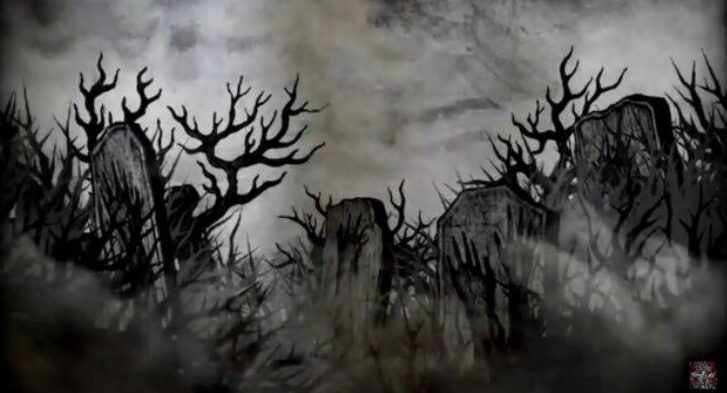
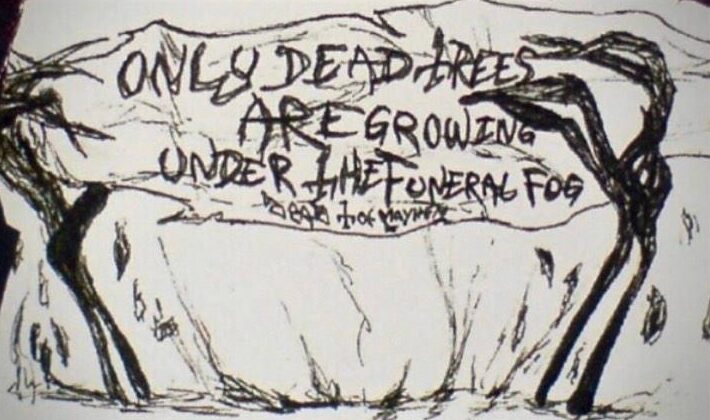
Carach Angren said the albums they create are their monsters. Similarly, this article that I created is my own monster. It is an infinite circle between the good and the evil, life and death, with never-ending stories…
REFERENCES
Mycomicshop | Gone-and-forgotten | Allthatsinteresting.com | Hauntedpalaceblog | Thesnapper | Piercingmooncreations | Marineinsight | Ststworld | Noizr


